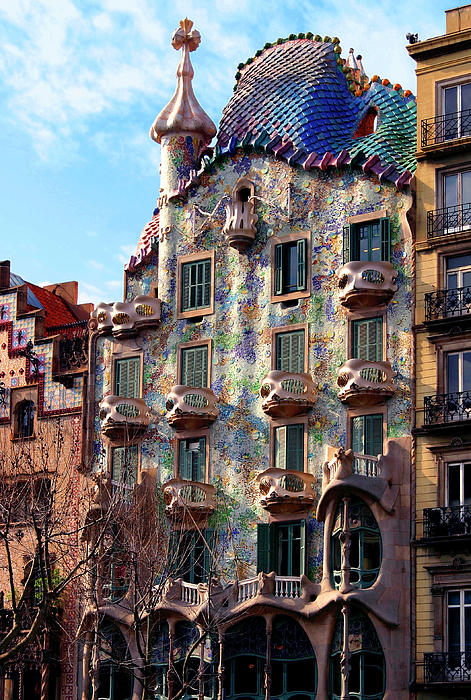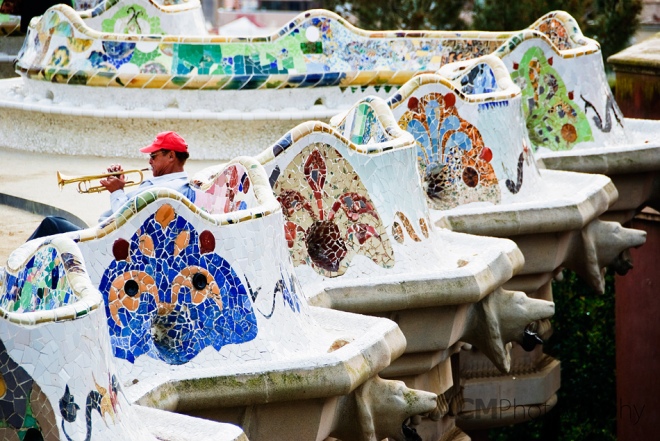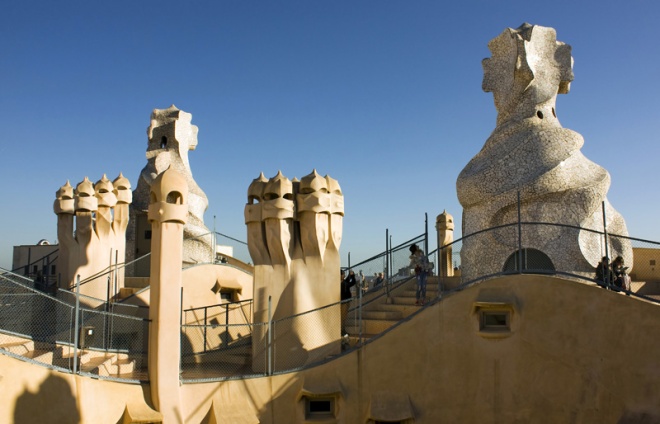“Gaudí’s work exhibits an important interchange of values closely associated with the cultural and artistic currents of his time, as represented in Catalonian Modernism.” – Unesco
The Spanish architect Antoni Gaudi has taken many of his ideas from different cultures and nature. An example of this are the heaters that are based on the gills of a fish because they move they can let through air, making sure that the fish stays at an optimum temperature. Not only this but also the roof of the house is based on the scale of the fish.
I went to Barcelona a year ago and I can personally tell you that the buildings are a must-see. You will be amazed by the ordinary colours and shapes, which create construction’s that are internationally known from Gaudi’s work. When I went there I visited all the famous attractions: Sagrada Familia, Park Güell, Casa Batllo and Casa Milá. With this new app, created by the Gaudi Orginasation, I was able to walk around and find out what every little detail meant and was inspired on, and why it was made that way by the architect. This made the experience way more interesting to me. (Sadly, though, my own pictures have been destroyed. Therefore pictures chosen have been taken from the internet.)



Gaudi has played an important role in the cultural identity of Barcelona. He designed several distinct buildings and a park in Barcelona. Casa Batllo was a renovation project but because of the shape, vibrant colours and extensive façade of ceramics and mosaics, it is one of Gaudi’s best-known projects. Park Güell is another example of how his distinctive style can even be seen in benches and porticoes. One of the benches is a giant snake which is a cultural link to the snake in the garden of Eden and Eve. Gaudi travelled a lot to come widen his knowledge and inspiration. He travelled around in Morocco to examine for a project that he was requested to design for the Franciscan Catholic Mission. A result of this cultural inspiration can be seen in Casa Milá’s rooftop. The designs that function as chimney’s and extra decorations, the caves, abstract soldier faces and colours of the sand from Moroccan Berber style.


Another building, the most famous one called Sagrada Familia was heavily based on the Christian believe. Gaudi was a Christian in the 1880’s when he started creating, sketching and building his ideas. In some kind of way, Gaudi’s work was a silent protest because he wanted to incorporate his Catalans background into his work to defence the cultural identity of the Catalan people, who were at that time forbidden to be educated in Catalan Spanish, due to regulations in Madrid. Many embassies and biblical stories are hidden in the details of the facades.
Sagrada Familia has been based on the four seasons of nature that are shown inside the church. On the ceiling, you can spot branches of trees, flowers and different times of the sun in a day. The seasons – and nature in general – are shown in all Gaudi’s works, which gives it this unique and spectacular feeling and sight.